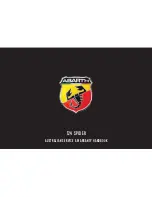
Do not continue driving without run-flat
tires
Do not continue driving if the vehicle is not
equipped with run-flat tires; continued driving
may result in serious accidents.◀
Continued driving with a flat tire
Possible driving distance with complete loss of
tire inflation pressure:
▷
With a light load: 1 to 2 people without lug‐
gage: approx. 90 miles/150 km.
▷
With a medium load: 2 people, trunk full, or
4 people without luggage: approx. 50 miles/
80 km.
▷
With a full load: 4 people, trunk full: approx.
30 miles/50 km.
Continued driving with a flat tire
Drive moderately and do not exceed a
speed of 50 mph/80 km/h.
A loss of tire inflation pressure results in a
change in the handling characteristics, e.g., re‐
duced lane stability during braking, a longer
braking distance and altered self-steering prop‐
erties.◀
Final tire failure
Vibrations or loud noises while driving can
indicate the final failure of the tire. Reduce speed
and stop; otherwise, pieces of the tire could
come loose and cause an accident. Do not con‐
tinue driving, and contact your service center.◀
Message when not reset
The yellow warning lamp lights up. A
message appears on the Control Dis‐
play.
The system was not reset, e.g., after a wheel
change.
Check the tire inflation pressure and reset the
system.
Status display
The current status of the Tire Pressure Monitor
TPM can be displayed on the Control Display,
e.g., whether or not the TPM is active.
1.
"Vehicle Info"
2.
"Vehicle status"
3.
"Tire Pressure Monitor - TPM"
The status is displayed.
Malfunction
The yellow warning lamp flashes and
then lights up continuously. The tires are
displayed in gray on the Control Display.
No flat tire can be detected.
Display in the following situations:
▷
Malfunction: have the system checked.
▷
A wheel without wheel electronics is fitted:
have the service center check it if necessary.
▷
Disturbance by systems or devices with the
same radio frequency: after leaving the area
of the disturbance, the system automatically
becomes active again.
Each tire, including the spare (if provided)
should be checked monthly when cold and in‐
flated to the inflation pressure recommended by
the vehicle manufacturer on the vehicle placard
or tire inflation pressure label. (If your vehicle has
tires of a different size than the size indicated on
the vehicle placard or tire inflation pressure la‐
bel, you should determine the proper tire infla‐
tion pressure for those tires.) As an added safety
feature, your vehicle has been equipped with a
tire pressure monitoring system (TPMS) that il‐
luminates a low tire pressure telltale when one
or more of your tires is significantly under-in‐
flated. Accordingly, when the low tire pressure
telltale illuminates, you should stop and check
your tires as soon as possible, and inflate them
to the proper pressure. Driving on a significantly
under-inflated tire causes the tire to overheat
Seite 94
94
Online Edition for Part no. 01 41 2 604 413 - 03 10 500
Safety
Summary of Contents for 535I
Page 2: ......
Page 10: ...10 Online Edition for Part no 01 41 2 604 413 03 10 500 ...
Page 30: ...30 Online Edition for Part no 01 41 2 604 413 03 10 500 ...
Page 144: ...144 Online Edition for Part no 01 41 2 604 413 03 10 500 ...
Page 152: ...152 Online Edition for Part no 01 41 2 604 413 03 10 500 ...
Page 170: ...170 Online Edition for Part no 01 41 2 604 413 03 10 500 ...
Page 202: ...202 Online Edition for Part no 01 41 2 604 413 03 10 500 ...
Page 222: ...222 Online Edition for Part no 01 41 2 604 413 03 10 500 ...
Page 254: ...254 Online Edition for Part no 01 41 2 604 413 03 10 500 ...
Page 276: ......
















































